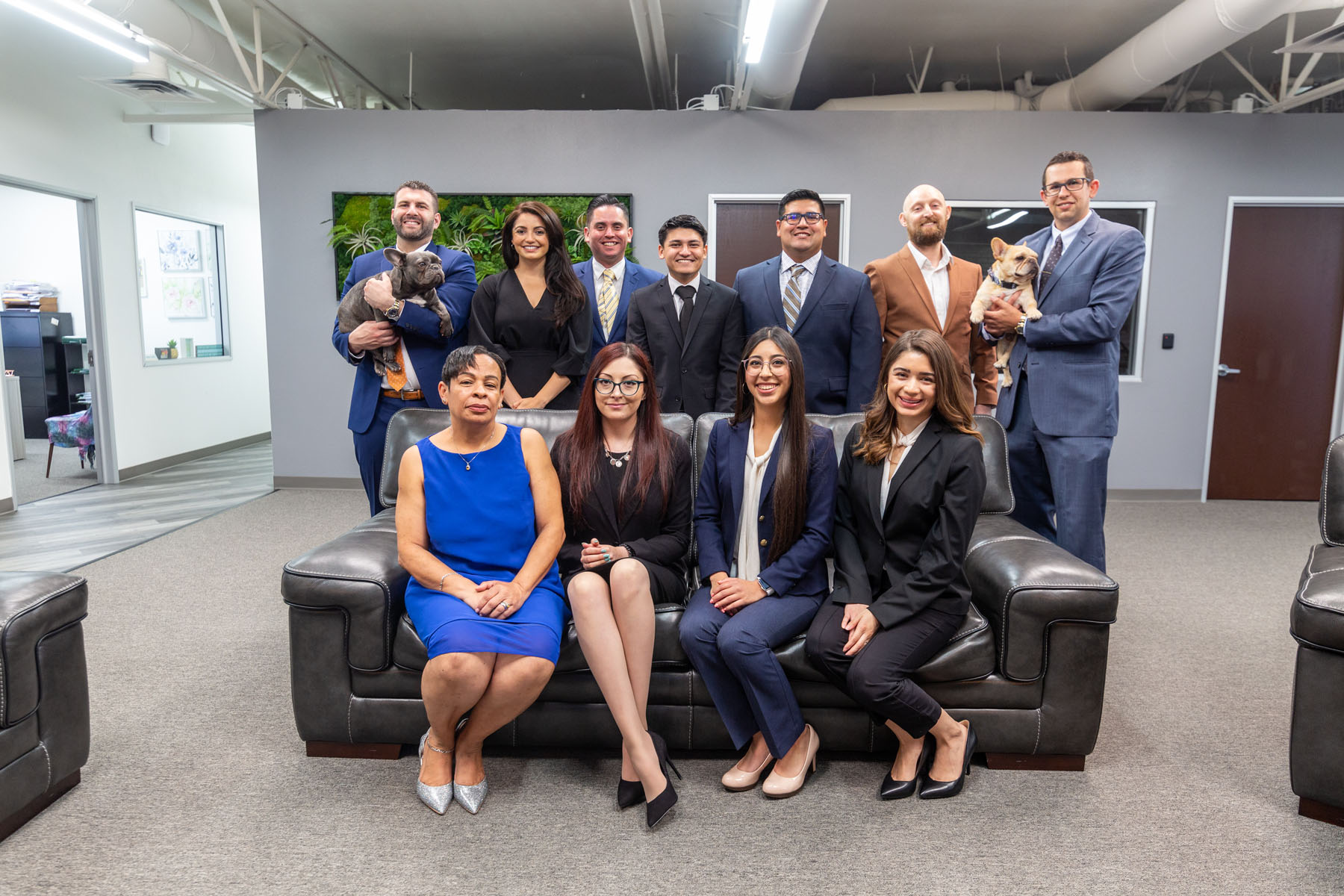As the summer approaches and you plan your upcoming car trips and vacations, consider the safety of your canine friend. Dogs in cars that unfortunately experience car accidents can suffer multiple injuries including fractures and broken bones, ruptured internal organs such as lungs, and severe mental and emotional trauma. Without careful preparation, it may be dangerous to bring your pups on trips with you in the car. Consider a safety restraint appropriate for your dog’s size and personality to keep them safely fastened.
Buckle Up! Doggy Seat Belts
Much like their owners, dogs should be properly fastened into a seatbelt. Dogs require special seat belts as regular car seat belts won’t safely dogs of all sizes. However, the right sized car harness can keep any dog sagely strapped in the back. This can also keep a dog safe from poking his head too far out the window. As much as dogs love to feel the fresh air, sticking their heads out the window puts them at risk of getting struck by a flying object or even jumping out if they are distracted by something outside of the vehicle or even worst case: falling out in unsafe conditions. Dog harnesses and seatbelts are perfect for well-behaved dogs. The seat belt will secure your loved one into a position with a strap that plugs into the normal seat belt receiver.
How To:
In order to ensure your pet’s safety using a dog seat belt/harness, first slide the car seat belt through the dog seat belt loop and buckle the dog’s seat in. Then, place the dog on the car seat. Finally, Connect the silver clasp to the harness and adjust the seat belt so it is both secure and comfortable for the dog.
Zipline Harness
Zipline harnesses attach to your car’s cargo hooks and provide security for the dog in the car while allowing the dog the freedom to move around the back seat comfortably. These harnesses are designed for active or young dogs that struggle to settle into the car or feel uneasy in cars.
How To:
To ensure your pet’s safety using a zipline harness, hook the zipline into the rear passenger’s seat belt and tab. Gently tug on each belt to ensure they are locked into position correctly. Once the seat belts are locked in, shorten the slack on the zipline.
Dog Crates
Dog crates can be extremely helpful for confident and relaxed dogs. A dog crate can ensure the safety while also allowing comfort for the dog in the car. The key is to make sure the crate is large enough for the dog to stand up and turn around in. When crated, dogs who are overwhelmed easily by sights or sounds can snuggle up and avoid trigger by being in a familiar place.
How To:
There are several factors to consider when choosing a crate: size, safety, and set up. The crate should be big enough for the dog to sit, stand, and turn around in. The crate should also enclose them and protect the dog from any incidents. Once the correct crate is chosen, place the crate in the back of the vehicle. If needed, cover the crate with blanket to help the dog relax.
Plush Carry Box
Plush carry boxes are perfect for smaller, anxious dogs. The elevated box can give the dog a better view of the owner and their surroundings without endangering him.
How To
To ensure your dog’s safety using a plush carry box, make sure you use it in conjunction with a dog harness. First, [lace the plush carry box in the back seat securely. Then, put your dog in the box and attach the harness to the carry box.
Dog Guard
Placing a dog guard in the boot of the car can be a good idea for dogs who like to see their human and enjoy the freedom to move around. The guard can prevent the dog from being thrown around in the event of an accident.
How To
To ensure the safety of your dog using a guard, make sure the guard bolts to both the floor and the roof of the car so it won’t be knocked out of position. First, fit the guard into your car. Next, bolt the guard into the back of the rear car seats. Finally, lock the guard to the inside of the roof.
Back Seat Hammock
Back Seat Hammocks are Perfect for senior dogs who want or need to lie down comfortably. The hammock protects the dog from falling and prevents them from climbing around the car.
How To
To ensure your pet’s safety using a hammock, lay the quilted side of the hammock onto the back seat. Next, insert the anchors between the back and base of the seat. Finally, attach the safety straps to the rear and front headrests.
Back Seat Barrier
Back seat barriers are best for larger dogs that have difficulty relaxing when restrained. The barrier allows the dog to sit in the back seat without the risk of flying forward should the car stop suddenly. Some seat barriers have upper and lower vents to promote healthy air circulation and can be adjusted to fit between the front and passenger seats of most cars.
How To
To ensure the safety of your dog using a back seat barrier, remove the head rests then slide the headrest post through the ring fastenings. Next, re-attach the headrests. Finally, attach the bottom corners of the barrier to the
No matter the tool you choose to use when riding with your car, the key is to keep the dog safely out of your way while driving. A loose dog could hop on your lap and obstruct your vision or jump down near your fear and obstruct your use of the gas and brake pedals. Needless to say, this creates multiple safety issues for you and your pet.
Additionally, pets should not be allowed to travel in the front seat. Airbags, though designed to protect, can injure pets just as they do people. Pets sitting in the front seat are at risk of severe injuries from an airbag deploying.
Other Safety Issues for Dogs in Cars
Restraining your dog is just one safety precaution for traveling with your pets. There are several other hidden dangers in cars that one should consider before bringing dogs in cars. See the list below for other helpful tips!
- Avoid feeding your dog or giving him treats while in the car. This can be a choking hazard.
- Clean up your car! Dogs seem to think everything can be a snack. That means any leftover garbage, hidden food, etc. in your car can become potentially hazardous. Take the extra time to clean up your vehicle before allowing your dog in your vehicle.
- When your dog joins you on a trip, make sure to schedule plenty of stops. Dogs in cars may require additional stops to let out some energy, stretch its leg, or relieve its digestive organs.
- Watch the dogs before opening and closing doors. Dogs can be seriously injured if doors are opened or closed while they are leaning against them.
- Keep the air conditioner on. Whether you are in the vehicle with the dog or have left them for a brief period, keep the temperature of the car cool for the dogs in the car.
- If your dog is new to taking car trips with you, start by taking shorter trips. This could save you some time (and money) cleaning your car in the event your car gets motion sickness.
- Watch your windows. Open windows carry multiple risks. Not only is the dog at risk for being triggered and sticking its head too far out the window, but the dog is also exposed to debris, dust, etc. in the air.
- Additionally, dogs love to chew… on anything. Make sure your furry friend is not chewing through your seatbelts!




